Related Research Articles
KMSB is a television station in Tucson,Arizona,United States,affiliated with the Fox network. It is owned by Tegna Inc. alongside dual CW/MyNetworkTV affiliate KTTU-TV;Tegna maintains a shared services agreement (SSA) with Gray Television,owner of CBS affiliate KOLD-TV,for the provision of studio space and technical services and the production of local newscasts for KMSB. The three stations share studios on North Business Park Drive on the northwest side of Tucson. KMSB's lone transmitter is located atop Mount Bigelow;as a result of the transmitter's location,residents in the northern part of Tucson,Oro Valley,and Marana do not receive adequate reception of the station.
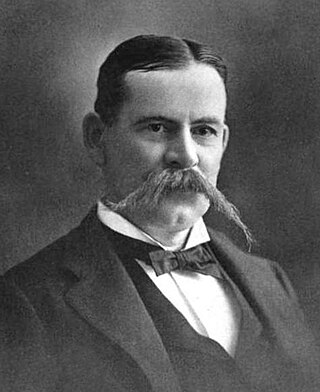
George Waldron Cheyney was an American businessman and politician. While living in Tombstone,Arizona Territory he served four years as the territory's Superintendent of Public Instruction and was twice elected to the territorial legislature. In his later years he was postmaster for Tucson,Arizona before being elected a probate judge.
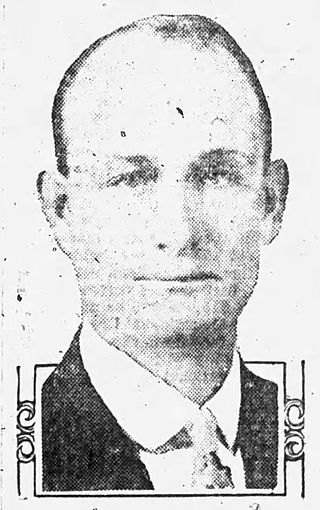
Fred Tuttle Colter was an Arizona rancher and farmer,as well as being the state senator for Apache County beginning with Arizona's second state legislature in 1915. Colter spent six terms in the Arizona Senate. He also led the fight on Arizona's behalf to maintain control over the water from the Colorado River,coining the slogan,"Save the Colorado for Arizona". He was a close ally of the state's first governor,George W. P. Hunt. Prior to his election to the state senate,Colter had served as the state's fair commissioner.

Elgin Bryce Holt was an American geologist,mine owner and engineer,amateur scientist,anthropologist and entrepreneur who reorganized and managed the Cerro de Plata Mining Company in Magdalena,Sonora,Mexico.

Hurricane Heather was one of the worst tropical cyclones to affect Arizona on record. The sixteenth tropical cyclone,eighth named storm,and fourth hurricane of the 1977 Pacific hurricane season,it began as a tropical disturbance off the west coast of Mexico on October 3. The next day,October 4,it developed into a tropical depression and then turned to the northwest. It was soon upgraded to Tropical Storm Heather. On October 5,Heather became a hurricane,and later that day its winds peaked at 85 mph (137 km/h). Heather began to turn north-northwest around this time. By October 6,it was re-designated a tropical storm. Moving north,Heather continued to weaken over cooler waters,and on October 7,the final advisory was issued,downgrading Heather to a tropical depression.

Charles M. Roberts was an American politician who served in the first Arizona State Senate.
Alfred Kinney was a politician from Arizona. He was one of the first two state senators from Gila County,serving in the first three state legislatures,and the 6th through 10th legislatures,a total of eight legislatures overall.

William Wilson Pace was an American politician and cattleman from Arizona. He was a member of three territorial legislatures prior to statehood,and was a member of the Arizona State Senate in the 1st Arizona State Legislature.
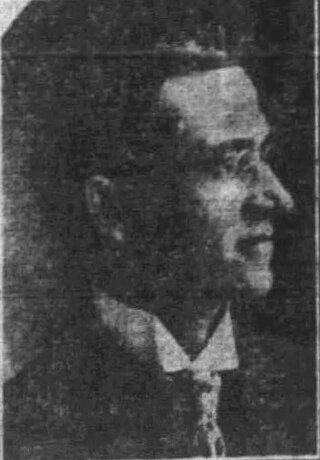
John T. Hughes was a politician from Arizona who served in the 1st Arizona State Legislature. He was also a newspaper man,editing and publishing his father's paper,the Arizona Daily Star,and an attorney,the first native-born Arizonan to be admitted to the Arizona bar. Additionally,he had several mining and real estate interests.
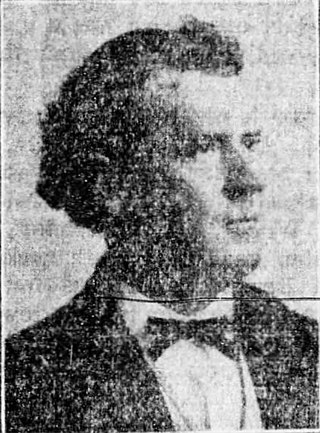
Colonel A. A. Worsley was a politician from Arizona who served in the 1st Arizona State Legislature. Worsley was also an attorney,who practiced in Tucson,Arizona. He was married to Alice J. Worsley.
James A. Harrison was a politician from Arizona who served in the 1st Arizona State Legislature. He returned to the state senate in 1932 and served four more terms,three consecutively from 1932 through 1938. He operated the large Harrison ranch from the early 1900s through 1950,when he sold it to his son and grandson. He served on the Santa Cruz county board of supervisors from its inception through 1920. He was also on the city council of Nogales,Arizona,and served several terms as its mayor. Early in his life he was a stage coach driver for Wells Fargo.

Sam F. Webb was a politician from Arizona who served in the Arizona legislature for several terms,both when it was a territory and after it became a state. He served in the state house of representatives during the 12th,14th,and 25th Arizona Territorial Legislatures,and in the upper house of the legislature,called the council,during the 15th Arizona Territorial Legislature. During the 14th and 25th legislatures he served as Speaker. He also served in the Arizona State Senate during the 2nd Arizona State Legislature. He held several other governmental positions over the years,including customs inspector for Arizona,Maricopa County treasurer,as well as serving in both the Maricopa County's assessor's and recorder's offices,and a short stint as a deputy U.S. Marshall. He also operated several successful mining operations in both Arizona and Sonora,Mexico,was both a rancher and farmer,and was the editor of several papers in Tucson and Phoenix.
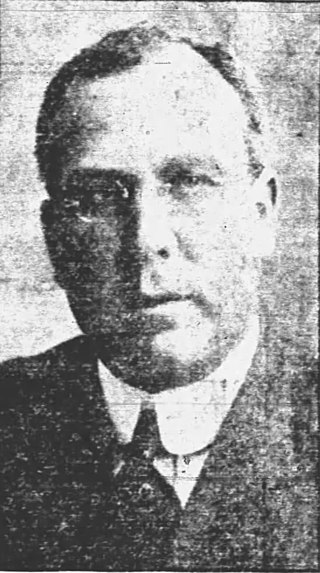
Mose Drachman was a pioneer business and civic leader,as well as politician,in Tucson,Arizona,during the early 1900s. He was involved in numerous interests,including mercantile,real estate,banking,mining,and cattle. He served as the Senior Clerk for the U.S. District Court in Arizona during the term of William H. Sawtelle,served two terms on the Tucson City Council,and five consecutive terms on the Tucson Board of Education,as well as being on both the Tucson and Phoenix chambers of commerce. He also served a single term in the Arizona state senate during the 2nd Arizona State Legislature. Two books were written about his life,Ridin' the Rainbow,and Chicken Every Sunday,the latter being made into a Broadway play,as well as a motion picture of the same name.
Harry John Karns was an Arizona politician who served a single term in the Arizona State Senate during the 2nd Arizona State Legislature. He served 3 consecutive terms as mayor of Nogales from 1927 to 1933. While in office,he oversaw the paving of the streets of Nogales,installation of a sewer system,and street lights.
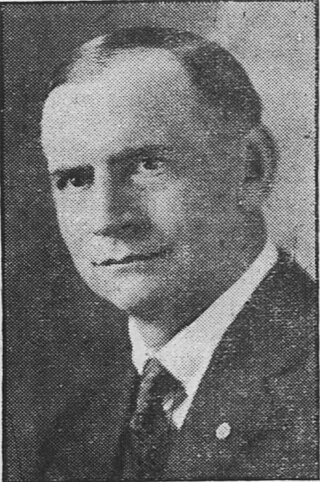
Ernest R. Hall was an Arizona politician who served a single term in the Arizona State Senate during the 3rd Arizona State Legislature. He ran several other times for the state legislature,mostly for the State Senate,but once for the State House of Representatives. He also ran three times for Arizona Secretary of State,winning in the 1920 election. Other offices he held were justice of the peace and postmaster,both in the Salome,Arizona area. He was a combat veteran of World War I,and was a very successful farmer in Maricopa County for several decades.

Charles Hays Rutherford was an American lawyer and politician from Arizona who served in the Arizona State Senate from 1917 through 1918,during the 3rd Arizona State Legislature. He also served during the 6th Arizona State Legislature. He served in the Army Reserve,first in the JAG corps,then in the Specialist Reserve Corps,eventually attaining the rank of Colonel. From 1930 until his death in 1950 he served as a civilian aide to the Secretary of War. He practiced law,first in Indiana early in his career,and then in Arizona,until he was disbarred by the Arizona Supreme Court in 1949.
J. Warren Young was an American politician from Arizona. He served a single term in the Arizona State Senate during the 4th Arizona State Legislature.
Thomas P. Thompson was an American politician from Arizona. He served a single term in the Arizona State Senate during the 4th Arizona State Legislature,holding the seat from Santa Cruz County.
Frank A. Woodward was an American politician from Arizona. He served a single term in the Arizona State Senate during the 5th Arizona State Legislature,holding one of the two seats from Gila County. Originally from Massachusetts,he also lived in Minneapolis,Minnesota and West Superior,Wisconsin,where he was mayor,before moving to Arizona. Aside from his political career,he was engaged in the railroad and clothing industries,before becoming involved in the mining industry.
J. L. Schleimer was an American politician from Arizona. He served a single term in the Arizona State Senate during the 5th Arizona State Legislature,holding the seat from Santa Cruz County. He was a real estate developer,first in California,then in Nogales,Arizona. Later in life he became the vice-council for Venezuela in Los Angeles.
References
- ↑ "History of the Arizona State Legislature 1912–1966". State of Arizona. pp. 8–9. Retrieved March 3, 2022.
- ↑ "Personal Mention". The Monitor. June 24, 1887. p. 8. Retrieved June 23, 2022– via Newspapers.com.

- ↑ "Lost This Battle". The Wellington Daily News. August 15, 1911. p. 1. Retrieved June 23, 2022– via Newspapers.com.

- ↑ "Personal Mention". The Daily Standard. January 16, 1888. p. 4. Retrieved June 23, 2022– via Newspapers.com.

- ↑ "Local News". The Leader Courier . April 10, 1890. p. 6. Retrieved June 23, 2022– via Newspapers.com.

- ↑ "Notice". Kingman County Democrat . April 23, 1891. p. 3. Retrieved June 23, 2022– via Newspapers.com.

- ↑ "Great Reduction". The Kingman Journal . November 20, 1891. p. 3. Retrieved June 23, 2022– via Newspapers.com.

- ↑ "Untitled". Kingman County Democrat . December 22, 1892. p. 3. Retrieved June 23, 2022– via Newspapers.com.

- ↑ "Untitled". The Kingman Journal . March 17, 1893. p. 3. Retrieved June 23, 2022– via Newspapers.com.

- ↑ "Untitled". The Caldwell Advance . November 16, 1893. p. 5. Retrieved June 23, 2022– via Newspapers.com.

- ↑ "Untitled". The Caldwell Advance . September 19, 1895. p. 4. Retrieved June 23, 2022– via Newspapers.com.

- ↑ "Personal". The Monitor-Press . February 6, 1896. p. 1. Retrieved June 23, 2022– via Newspapers.com.

- ↑ "Local News". The Sumner County Star . April 23, 1896. p. 1. Retrieved June 23, 2022– via Newspapers.com.

- ↑ "Untitled". The Wellington Daily Voice . October 7, 1896. p. 4. Retrieved June 23, 2022– via Newspapers.com.

- ↑ "Untitled". The Sumner County Star . March 29, 1899. p. 1. Retrieved June 23, 2022– via Newspapers.com.

- ↑ "Personal Mention". The Monitor-Press . April 20, 1899. p. 10. Retrieved June 23, 2022– via Newspapers.com.

- ↑ "Untitled". The Daily Mail . October 21, 1902. p. 1. Retrieved June 23, 2022– via Newspapers.com.

- ↑ "Nogales Notes". The Oasis . July 7, 1900. p. 1. Retrieved June 21, 2022– via Newspapers.com.

- ↑ "Ray Ferguson, M.D." The Oasis . September 5, 1903. p. 9. Retrieved June 21, 2022– via Newspapers.com.

- 1 2 "Untitled". The Oasis . March 31, 1906. p. 6. Retrieved June 21, 2022– via Newspapers.com.

- ↑ "Local Items". The Border Vidette . August 8, 1903. p. 5. Retrieved June 21, 2022– via Newspapers.com.

- ↑ "Articles of Incorporation of The World's Fair Mining Company". The Border Vidette . February 20, 1904. p. 4. Retrieved June 21, 2022– via Newspapers.com.

- ↑ "Mining Transactions-Tucson is Benefitted". The Border Vidette . April 23, 1904. p. 1. Retrieved June 21, 2022– via Newspapers.com.

- ↑ "Sues For Large Sum". The Oasis . September 2, 1905. p. 5. Retrieved June 21, 2022– via Newspapers.com.

- ↑ "Nogales Notes". The Oasis . April 9, 1904. p. 4. Retrieved June 21, 2022– via Newspapers.com.

- 1 2 "Local News". The Border Vidette . October 13, 1917. p. 3. Retrieved June 21, 2022– via Newspapers.com.

- ↑ "Ray Ferguson in Politics". The Daily Mail . November 16, 1904. p. 1. Retrieved June 23, 2022– via Newspapers.com.

- ↑ "Local Items". The Border Vidette . November 12, 1904. p. 3. Retrieved June 21, 2022– via Newspapers.com.

- ↑ "Nogales Notes". The Oasis . November 10, 1906. p. 7. Retrieved June 21, 2022– via Newspapers.com.

- ↑ "Dr. Ray Ferguson New Asylum Superintendent". The Tucson Citizen . March 9, 1906. p. 5. Retrieved June 21, 2022– via Newspapers.com.

- ↑ "Improvements For Arizona's Asylum". Tombstone Weekly Epitaph . December 23, 1906. p. 2. Retrieved June 21, 2022– via Newspapers.com.

- ↑ "Bughouse Is Crowded". Daily Arizona Silver Belt . September 8, 1907. p. 5. Retrieved June 21, 2022– via Newspapers.com.

- ↑ "Bloody Deed of a Maniac". The Arizona Republican . November 1, 1907. p. 8. Retrieved June 21, 2022– via Newspapers.com.

- ↑ "Maniac Makes a Bloody Assault". Daily Arizona Silver Belt . November 1, 1907. p. 1. Retrieved June 21, 2022– via Newspapers.com.

- ↑ "Dr. Ferguson Is Better". Tucson Citizen . November 1, 1907. p. 5. Retrieved June 21, 2022– via Newspapers.com.

- ↑ "Dr. Ferguson Almost Killed". The Border Vidette . November 2, 1907. p. 3. Retrieved June 21, 2022– via Newspapers.com.

- ↑ "Dr. Ferguson Is Taken To Kansas". Bisbee Daily Review . November 15, 1907. p. 8. Retrieved June 21, 2022– via Newspapers.com.

- ↑ "Dr. Ferguson Now In Kansas City". The Tucson Citizen . December 12, 1907. p. 5. Retrieved June 21, 2022– via Newspapers.com.

- ↑ "Dr. Ferguson Has Almost Entirely Recovered". The Tucson Citizen . February 20, 1908. p. 3. Retrieved June 21, 2022– via Newspapers.com.

- ↑ "Dr. Ferguson Home". The Arizona Republican . March 10, 1908. p. 6. Retrieved June 21, 2022– via Newspapers.com.

- ↑ "Dr. Ferguson Is Taken To Kansas". The Oasis . July 18, 1908. p. 7. Retrieved June 21, 2022– via Newspapers.com.

- ↑ "Local Items". The Border Vidette . June 4, 1910. p. 3. Retrieved June 22, 2022– via Newspapers.com.

- ↑ "First Payment Made". The Oasis . October 28, 1905. p. 8. Retrieved June 22, 2022– via Newspapers.com.

- ↑ "Patagonia Notes". The Oasis . August 8, 1908. p. 12. Retrieved June 22, 2022– via Newspapers.com.

- ↑ "Local Items". The Border Vidette . November 14, 1908. p. 3. Retrieved June 22, 2022– via Newspapers.com.

- ↑ "Local Items". The Border Vidette . June 26, 1909. p. 3. Retrieved June 22, 2022– via Newspapers.com.

- ↑ "Nogales Notes". The Oasis . October 3, 1908. p. 8. Retrieved June 21, 2022– via Newspapers.com.

- ↑ "Dr. Ferguson To Make Home Here". Arizona Daily Star . May 18, 1909. p. 7. Retrieved June 21, 2022– via Newspapers.com.

- ↑ "Nogales Personals". Arizona Daily Star . June 24, 1909. p. 3. Retrieved June 21, 2022– via Newspapers.com.

- ↑ "Nogales Notes". The Oasis . October 29, 1910. p. 7. Retrieved June 22, 2022– via Newspapers.com.

- ↑ "Nogales Notes". The Oasis . May 7, 1911. p. 7. Retrieved June 22, 2022– via Newspapers.com.

- ↑ "Local and Personal". The San Pedro Pilot . May 18, 1912. p. 4. Retrieved June 22, 2022– via Newspapers.com.

- ↑ "Local News". The Border Vidette . November 6, 1915. p. 3. Retrieved June 22, 2022– via Newspapers.com.

- ↑ "Local News". The Border Vidette . November 20, 1915. p. 3. Retrieved June 22, 2022– via Newspapers.com.

- ↑ "Local News". The Border Vidette . March 11, 1916. p. 3. Retrieved June 22, 2022– via Newspapers.com.

- ↑ "Local News". The Border Vidette . May 20, 1916. p. 3. Retrieved June 22, 2022– via Newspapers.com.

- ↑ "Local News". The Border Vidette . June 22, 1916. p. 3. Retrieved June 22, 2022– via Newspapers.com.

- ↑ "Republican Candidates". The Border Vidette . August 26, 1916. p. 3. Retrieved June 22, 2022– via Newspapers.com.

- ↑ "Democratic Petitions Filed". The Border Vidette . August 26, 1916. p. 2. Retrieved June 22, 2022– via Newspapers.com.

- ↑ "Local News". The Border Vidette . October 7, 1916. p. 3. Retrieved June 22, 2022– via Newspapers.com.

- ↑ "Unofficial Election Returns". The Border Vidette . November 18, 1916. p. 2. Retrieved June 22, 2022– via Newspapers.com.

- ↑ "Conservative Democrats In Control of New State Senate". The Arizona Republican . December 27, 1916. p. 2. Retrieved June 22, 2022– via Newspapers.com.

- ↑ "Lieut. Maddock Will Run For Congress". The Coconino Sun . August 23, 1918. p. 4. Retrieved June 22, 2022– via Newspapers.com.

- ↑ "Election Returns". The Border Vidette . November 30, 1918. p. 1. Retrieved June 22, 2022– via Newspapers.com.

- ↑ "Dr. Ray Ferguson New Hospital Head". The Border Vidette . August 13, 1921. p. 4. Retrieved June 22, 2022– via Newspapers.com.

- ↑ "Dr. Ray Ferguson Resigns As Head of State Hospital Head". The Arizona Republican . July 23, 1922. p. 6. Retrieved June 22, 2022– via Newspapers.com.

- ↑ "Married In Lordsburg". The Copper Era and Morenci Leader . July 21, 1922. p. 2. Retrieved June 23, 2022– via Newspapers.com.

- ↑ "Former Resident Dies in West". The Reporter-Times . May 10, 1937. p. 2. Retrieved June 23, 2022– via Newspapers.com.
